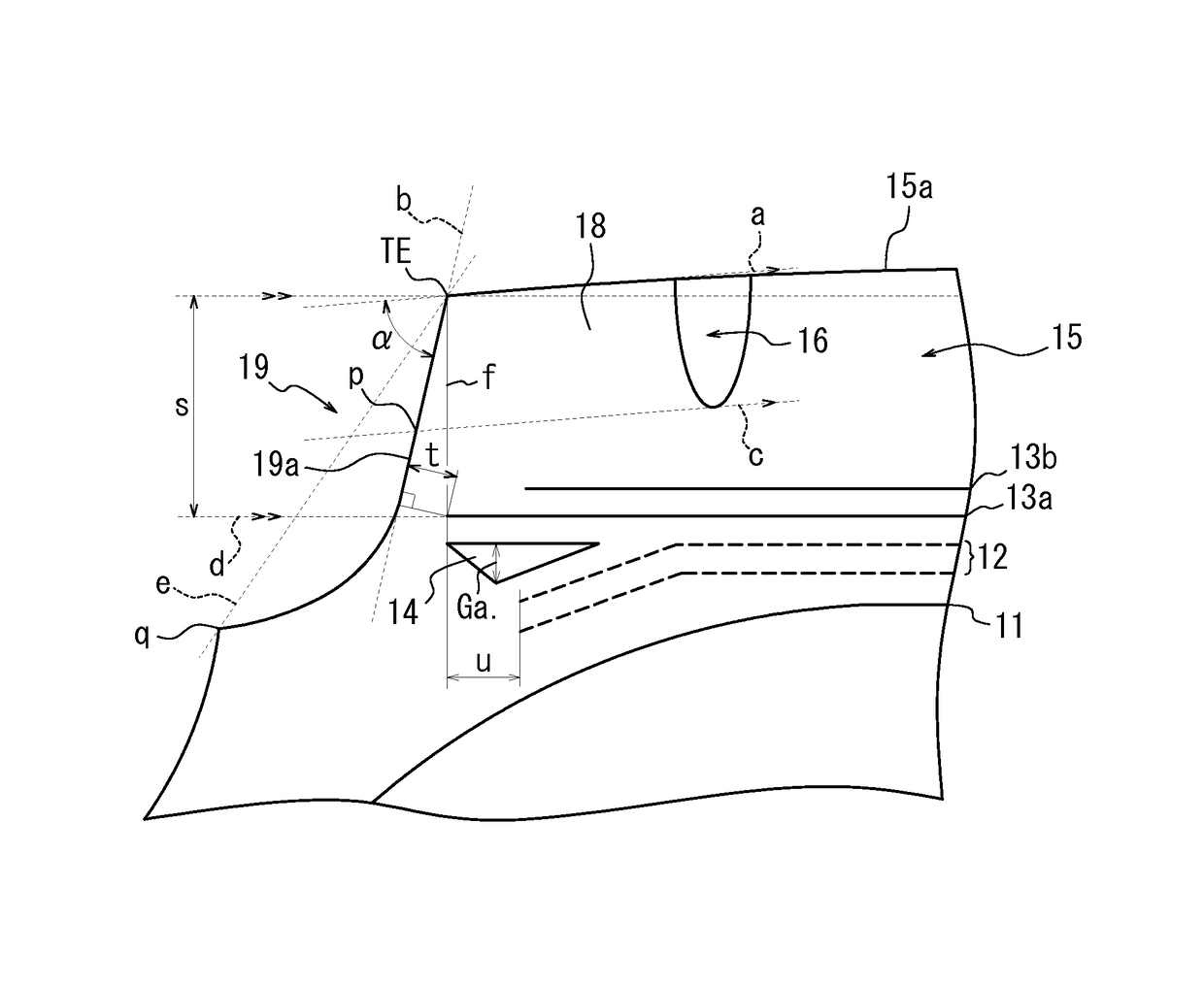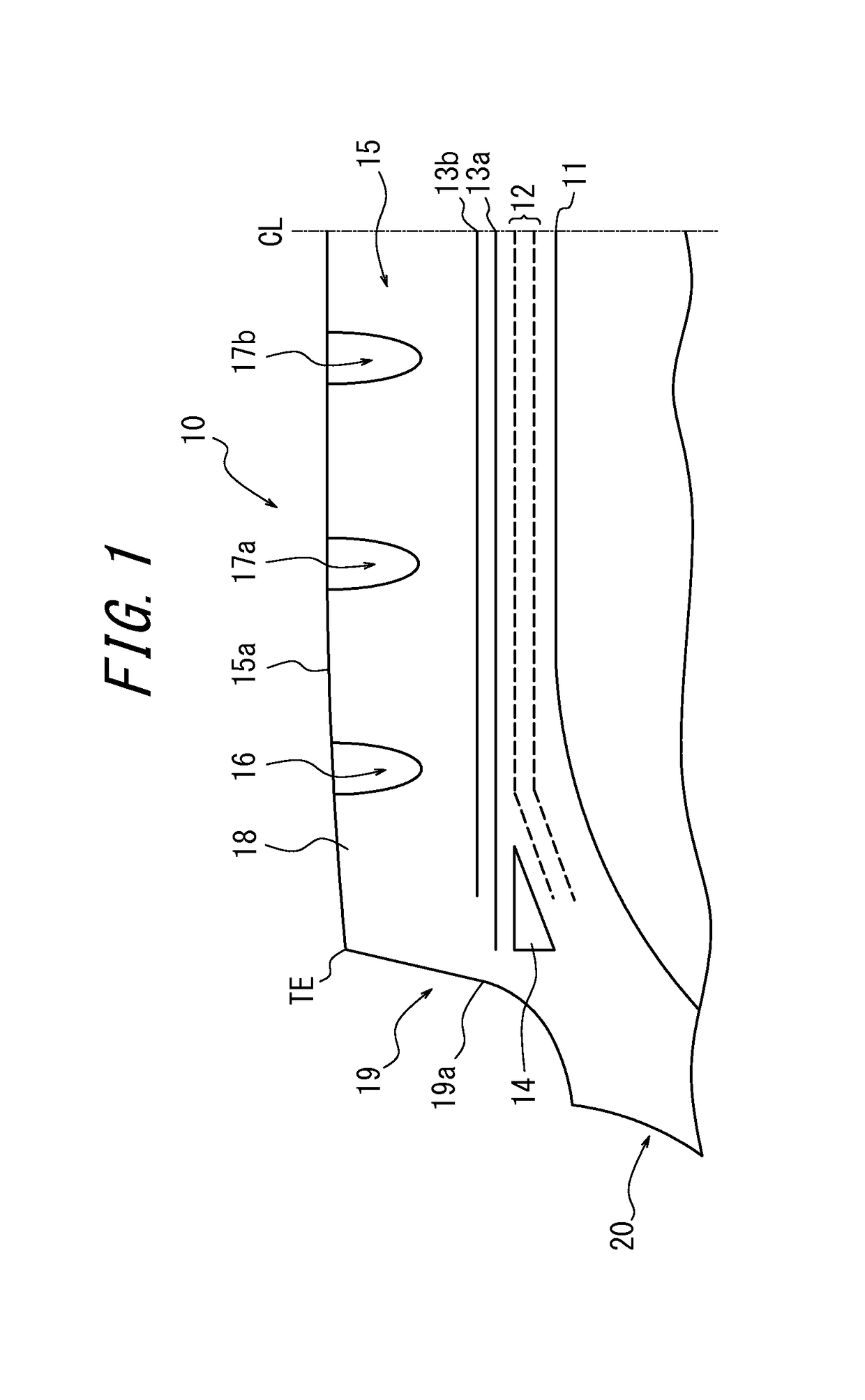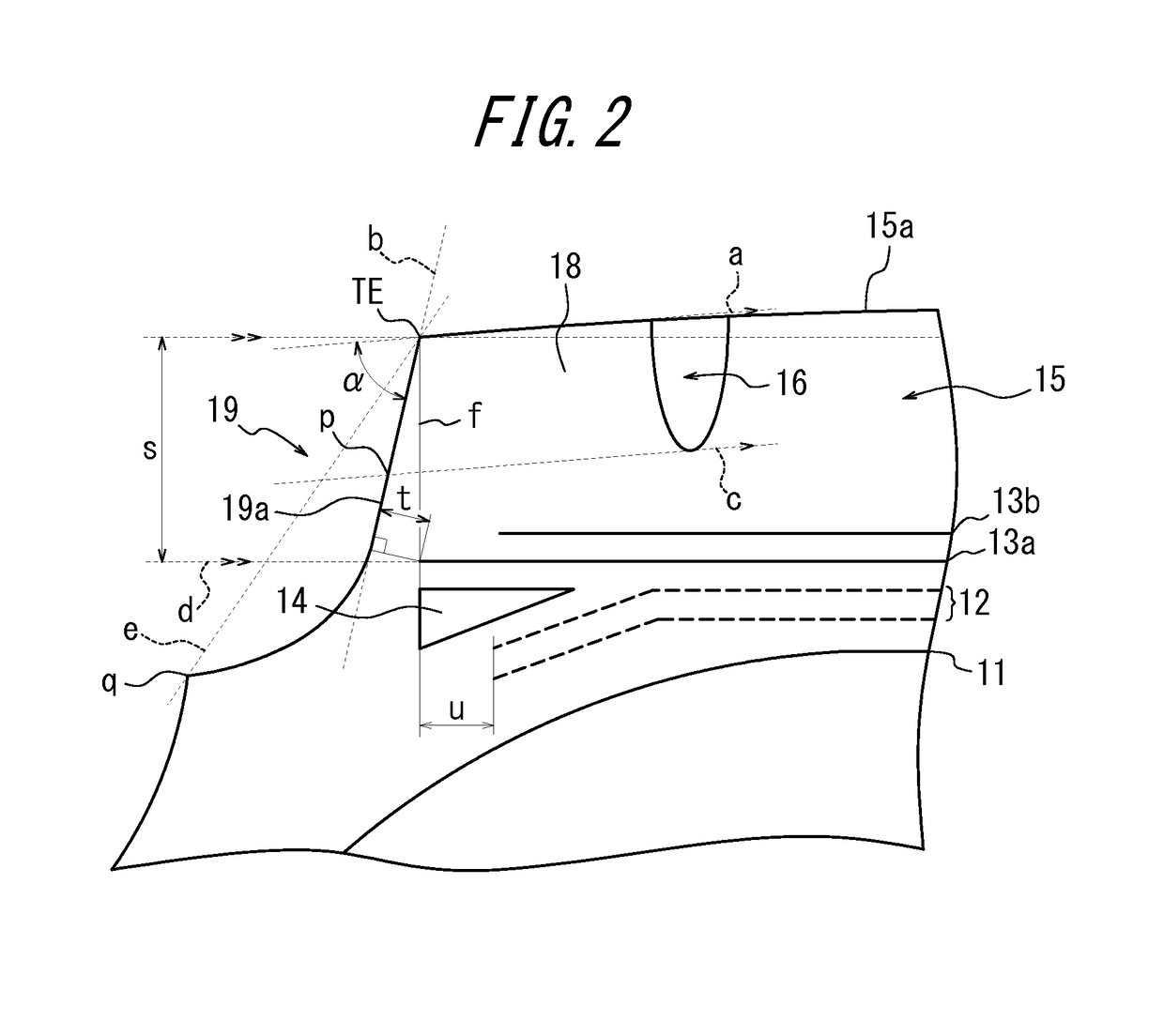Pneumatic tire
a technology of pneumatic tires and pneumatic rims, which is applied in the field of pneumatic tires, can solve the problems of tire likely to be subjected to partial wear, and achieve the effects of reducing contact pressure, less susceptible, and improving the partial wear resistance of the tread
- Summary
- Abstract
- Description
- Claims
- Application Information
AI Technical Summary
Benefits of technology
Problems solved by technology
Method used
Image
Examples
example
[0067]Tires in a size of 355 / 50R22.5 for use in trucks and buses are each assembled to a rim in a size of 11.75×22.5 to be filled to an air pressure (internal pressure) of 900 kPa, and subjected, as Conventional Example, Comparative Example 1, Comparative Example 2, and Examples 1 to 8, to durability test and wear test under a normal load of about 39 kN at a drum speed of 65 km / h.
[0068]Here, Conventional Example, and Comparative Examples 1 and 2 each have a buttress portion defined by a straight line connecting the tread end TE and the boundary q with the sidewall 20, rather than in a concave shape, while Examples 1 to 8 each have a buttress portion in a concave shape, that is, in a shape in which the tread end TE and the boundary q with the sidewall 20 are connected to each other by a concave curve.
[0069]In the durability test, a driving distance was measured before the tread separation failure occurred. In the wear test, the amount of wear in the tread was measured after the tire ...
PUM
 Login to View More
Login to View More Abstract
Description
Claims
Application Information
 Login to View More
Login to View More - R&D
- Intellectual Property
- Life Sciences
- Materials
- Tech Scout
- Unparalleled Data Quality
- Higher Quality Content
- 60% Fewer Hallucinations
Browse by: Latest US Patents, China's latest patents, Technical Efficacy Thesaurus, Application Domain, Technology Topic, Popular Technical Reports.
© 2025 PatSnap. All rights reserved.Legal|Privacy policy|Modern Slavery Act Transparency Statement|Sitemap|About US| Contact US: help@patsnap.com



